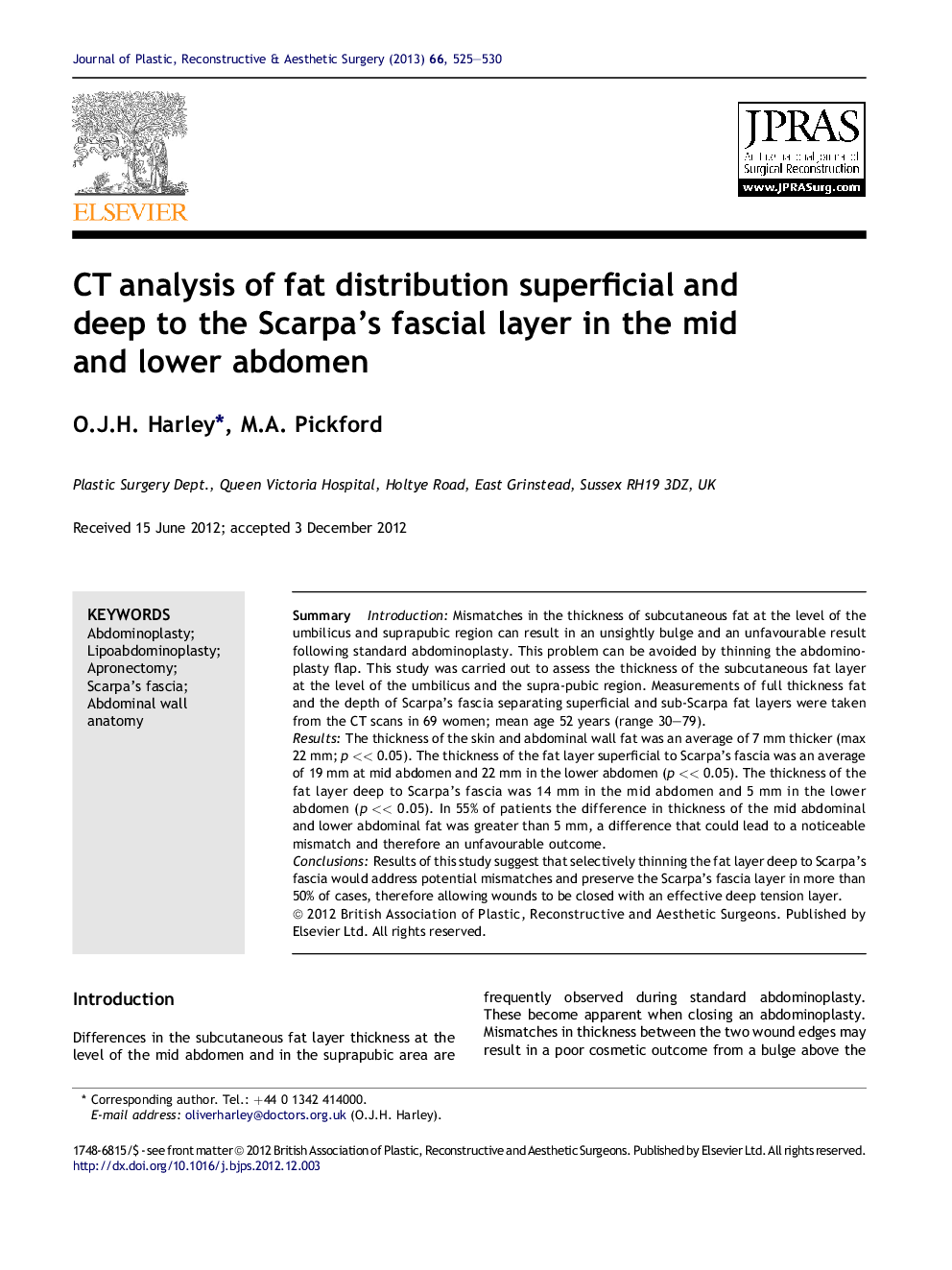| Article ID | Journal | Published Year | Pages | File Type |
|---|---|---|---|---|
| 4118414 | Journal of Plastic, Reconstructive & Aesthetic Surgery | 2013 | 6 Pages |
SummaryIntroductionMismatches in the thickness of subcutaneous fat at the level of the umbilicus and suprapubic region can result in an unsightly bulge and an unfavourable result following standard abdominoplasty. This problem can be avoided by thinning the abdominoplasty flap. This study was carried out to assess the thickness of the subcutaneous fat layer at the level of the umbilicus and the supra-pubic region. Measurements of full thickness fat and the depth of Scarpa's fascia separating superficial and sub-Scarpa fat layers were taken from the CT scans in 69 women; mean age 52 years (range 30–79).ResultsThe thickness of the skin and abdominal wall fat was an average of 7 mm thicker (max 22 mm; p << 0.05). The thickness of the fat layer superficial to Scarpa's fascia was an average of 19 mm at mid abdomen and 22 mm in the lower abdomen (p << 0.05). The thickness of the fat layer deep to Scarpa's fascia was 14 mm in the mid abdomen and 5 mm in the lower abdomen (p << 0.05). In 55% of patients the difference in thickness of the mid abdominal and lower abdominal fat was greater than 5 mm, a difference that could lead to a noticeable mismatch and therefore an unfavourable outcome.ConclusionsResults of this study suggest that selectively thinning the fat layer deep to Scarpa's fascia would address potential mismatches and preserve the Scarpa's fascia layer in more than 50% of cases, therefore allowing wounds to be closed with an effective deep tension layer.
